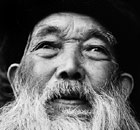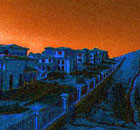Society
Beijing ups parking fees to ease downtown traffic
(Xinhua)
Updated: 2010-04-01 13:30
 |
Large Medium Small |
BEIJING: Beijing started on Thursday to double daytime parking fees in downtown areas in order to curb the city's ongoing traffic congestion, the municipal planning authority said.
| ||||
The new rule also allows toll collectors to raise the roadside parking fee to 15 yuan per hour for cars parked for more than an hour, said a spokesman with the committee.
He said the 13 zones could accommodate a total of 70,000 parked vehicles. Most of them in underground parking lots in office buildings.
"The new parking pricing should also encourage motorists to choose underground parking lots instead of roadside parking. Underground parking lots will be priced at 6 yuan per hour in the 13 zones," he said.
The hike is the latest measure to control the number of vehicles on roads, after the committee prolonged the 2008 Olympic Games transport measures to restrict road traffic.
"With the parking fee hike, I would park my car near metro stations and take the metro when I do shopping in the designated commercial districts. It saves both money and time," said a car owner surnamed Wei.
At least 800,000 more vehicles came on to Beijing roads in 2009. The total number has hit 4 million, of which more than 80 percent are privately owned.
Mayor Guo Jinlong said in his government report in January that the city government planed to get more people out of their cars and on to public transport mainly by extending 12 light-rail and subway lines and opening more express bus lanes in 2010.











